TR
-
 Success in differentiating Functional Vascular Progenitor Cells (VPC)
KAIST’s Professor Han Yong Man successfully differentiated vascular progenitor cells from human embryonic stem cells and reversed differentiated stem cells.
The research went beyond the current method of synthesis of embryonic body or mice cell ball culture and used the careful alteration of signal transmission system of the human embryonic stem cells to differentiate the formation of vascular progenitor cells.
The team controlled the MEK/ERK and BMP signal transmission system that serves an important role in the self replication of human embryonic stem cells and successfully differentiated 20% of the cells experimented on to vascular progenitor cells.
The vascular progenitor cells produced with such a method successfully differentiated into cells forming the endodermis of the blood vessel, vascular smooth muscle cells and hematopoietic cells in an environment outside of the human body and also successfully differentiated into blood vessels in nude mice.
In addition, the vascular progenitor cell derived from human embryonic cells successfully formed blood vessels or secreted vascular growth factors and increased the blood flow and the necrosis of blood vessels when injected into an animal with limb ischemic illness.
The research was funded by the Ministry of Education, Science and Technology, 21st Century Frontier Research and Development Institution’s Cell Application Research Department and Professor Ko Kyu Young (KAIST), Professor Choi Chul Hee (KAIST), Professor Jeong Hyung Min (Cha Medical School) and Doctor Jo Lee Sook (Researcher in Korea Bio Engineering Institute) participated in it.
The results of the research was published as the cover paper of the September edition of “Blood (IF:10.55)”, the American Blood Journal and has been patented domestically and has finished registration of foreign PCT.
The results of the experiment opened the possibility of providing a patient specific cure using stem cells in the field of blood vessel illness.
2011.01.18 View 15308
Success in differentiating Functional Vascular Progenitor Cells (VPC)
KAIST’s Professor Han Yong Man successfully differentiated vascular progenitor cells from human embryonic stem cells and reversed differentiated stem cells.
The research went beyond the current method of synthesis of embryonic body or mice cell ball culture and used the careful alteration of signal transmission system of the human embryonic stem cells to differentiate the formation of vascular progenitor cells.
The team controlled the MEK/ERK and BMP signal transmission system that serves an important role in the self replication of human embryonic stem cells and successfully differentiated 20% of the cells experimented on to vascular progenitor cells.
The vascular progenitor cells produced with such a method successfully differentiated into cells forming the endodermis of the blood vessel, vascular smooth muscle cells and hematopoietic cells in an environment outside of the human body and also successfully differentiated into blood vessels in nude mice.
In addition, the vascular progenitor cell derived from human embryonic cells successfully formed blood vessels or secreted vascular growth factors and increased the blood flow and the necrosis of blood vessels when injected into an animal with limb ischemic illness.
The research was funded by the Ministry of Education, Science and Technology, 21st Century Frontier Research and Development Institution’s Cell Application Research Department and Professor Ko Kyu Young (KAIST), Professor Choi Chul Hee (KAIST), Professor Jeong Hyung Min (Cha Medical School) and Doctor Jo Lee Sook (Researcher in Korea Bio Engineering Institute) participated in it.
The results of the research was published as the cover paper of the September edition of “Blood (IF:10.55)”, the American Blood Journal and has been patented domestically and has finished registration of foreign PCT.
The results of the experiment opened the possibility of providing a patient specific cure using stem cells in the field of blood vessel illness.
2011.01.18 View 15308 -
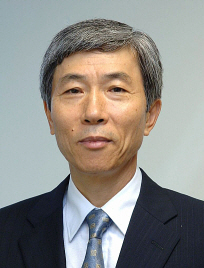 Professor Kang Suk Joong receives 'Korea Engineering Award.'
KAIST”s Professor Kang Suk Joong of the Department of Material Science and Engineering received ‘Korea Engineering Award’ from the Ministry of Education, Science and Technology and Korea Research Foundation. The award is given to those professors who have accomplished world class research and results.
Professor Kang has potentially redirected the direction of research in the field of the microstructure of materials by explaining the fundamental principle behind how the microstructure of a material that affects the physical properties of the polycrystalline structure and changes through processing. Professor Kang applied the results of his findings in the manufacture of new materials and made significant contributions to Korean Material Engineering Industry and was consequently awarded the award.
The ‘Korea Engineering Award’ was thought of in 1994 and a total of 24 recipients were recognized through the award in various fields like electronics, mechanics, chemistry, construction, etc. The recipient is awarded in addition the President’s award and 50million won as prize money.
The ceremony for ‘Korea Engineering Award’ and the ‘Young Scientist Award’ was held in Seoul Press Center Press Club on the 22nd of December at 3pm. The Minister of Education, Science and Technology (Lee Joo Ho), member of Board of Directors of the Korea Research Foundation (Kim Byoung Gook), Director of Korea Science and Technology Archive (Jeong Gil Seng), along with the recipients attended the ceremony.
In addition, Professor Kang was appointed as Distinguished Professor in March 2010 in recognition of his research accomplishments.
2011.01.18 View 12591
Professor Kang Suk Joong receives 'Korea Engineering Award.'
KAIST”s Professor Kang Suk Joong of the Department of Material Science and Engineering received ‘Korea Engineering Award’ from the Ministry of Education, Science and Technology and Korea Research Foundation. The award is given to those professors who have accomplished world class research and results.
Professor Kang has potentially redirected the direction of research in the field of the microstructure of materials by explaining the fundamental principle behind how the microstructure of a material that affects the physical properties of the polycrystalline structure and changes through processing. Professor Kang applied the results of his findings in the manufacture of new materials and made significant contributions to Korean Material Engineering Industry and was consequently awarded the award.
The ‘Korea Engineering Award’ was thought of in 1994 and a total of 24 recipients were recognized through the award in various fields like electronics, mechanics, chemistry, construction, etc. The recipient is awarded in addition the President’s award and 50million won as prize money.
The ceremony for ‘Korea Engineering Award’ and the ‘Young Scientist Award’ was held in Seoul Press Center Press Club on the 22nd of December at 3pm. The Minister of Education, Science and Technology (Lee Joo Ho), member of Board of Directors of the Korea Research Foundation (Kim Byoung Gook), Director of Korea Science and Technology Archive (Jeong Gil Seng), along with the recipients attended the ceremony.
In addition, Professor Kang was appointed as Distinguished Professor in March 2010 in recognition of his research accomplishments.
2011.01.18 View 12591 -
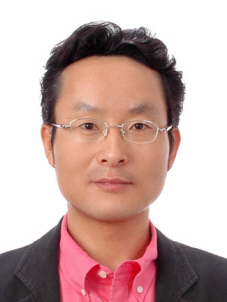 Explanation for the polymerized nucleic acid enzyme's abnormal activation found
KAIST’s Professor Park Hyun Kyu of the Department of Bio Chemical Engineering revealed on the 23rd of December 2010 that his team had successfully developed the technology that uses the metal ions to control the abnormal activation of nucleic acids’ enzymes and using this, created a logic gate, which is a core technology in the field of future bio electrons.
The polymerized nucleic acid enzyme works to increase the synthesis of DNA and kicks into action only when the target DNA and primers form complimentary pairs (A and T, C and G).
Professor Park broke the common conception and found that it is possible for none complimentary pairs like T-T and C-C to initiate the activation of the enzyme and thus increase the nucleic acid production, given that there are certain metal ions present.
What Professor Park realized is that the enzymes mistake the uncomplimentary T-T and C-C pairs (with stabilized structures due to the bonding with mercury and silver ions) as being complimentary base pairs. Professor Park described this phenomenon as the “illusionary polymerase activity.”
The research team developed a logic gate based on the “illusionary polymerase activity’ phenomenon.” The logic gate paves the way to the development of future bio electron needed for bio computers and high performance memories.
Professor Park commented, “The research is an advancement of the previous research carried on about metal ions and nucleic acid synthesis. Our research is the first attempt at merging the concepts of the two previously separately carried out researches and can be adapted for testing presence of metal ions and development of a new single nucleotide polymorphic gene analysis technology.”
Professor Park added that, “Our research is a great stride in the field of nano scale electron element research as the results made possible the formation of accurate logic gates through relatively cost efficient and simple system designs.”
On a side note, the research was funded by Korea Research Foundation (Chairman: Park Chan Mo) and was selected as the cover paper for the December issue of ‘Angewandte Chemie International Edition’.
2011.01.18 View 12604
Explanation for the polymerized nucleic acid enzyme's abnormal activation found
KAIST’s Professor Park Hyun Kyu of the Department of Bio Chemical Engineering revealed on the 23rd of December 2010 that his team had successfully developed the technology that uses the metal ions to control the abnormal activation of nucleic acids’ enzymes and using this, created a logic gate, which is a core technology in the field of future bio electrons.
The polymerized nucleic acid enzyme works to increase the synthesis of DNA and kicks into action only when the target DNA and primers form complimentary pairs (A and T, C and G).
Professor Park broke the common conception and found that it is possible for none complimentary pairs like T-T and C-C to initiate the activation of the enzyme and thus increase the nucleic acid production, given that there are certain metal ions present.
What Professor Park realized is that the enzymes mistake the uncomplimentary T-T and C-C pairs (with stabilized structures due to the bonding with mercury and silver ions) as being complimentary base pairs. Professor Park described this phenomenon as the “illusionary polymerase activity.”
The research team developed a logic gate based on the “illusionary polymerase activity’ phenomenon.” The logic gate paves the way to the development of future bio electron needed for bio computers and high performance memories.
Professor Park commented, “The research is an advancement of the previous research carried on about metal ions and nucleic acid synthesis. Our research is the first attempt at merging the concepts of the two previously separately carried out researches and can be adapted for testing presence of metal ions and development of a new single nucleotide polymorphic gene analysis technology.”
Professor Park added that, “Our research is a great stride in the field of nano scale electron element research as the results made possible the formation of accurate logic gates through relatively cost efficient and simple system designs.”
On a side note, the research was funded by Korea Research Foundation (Chairman: Park Chan Mo) and was selected as the cover paper for the December issue of ‘Angewandte Chemie International Edition’.
2011.01.18 View 12604 -
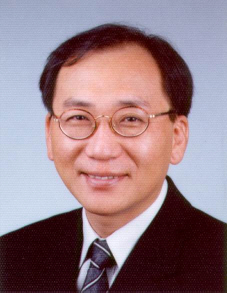 Professor Young-Ho Cho elected as head of international academic conference
KAIST’s Professor Young-Ho Cho of the Department of Bio and Brain Engineering was appointed as the head of the PowerMems (Power Micro Electro Mechanical Systems) symposium to be held at Se-Jong Hotel in Seoul from November 15-18, 2011.
Professor Jo is America’s first engineering doctor in the field of MEMS and is the founding member of the BSAC (Berkeley Sensor and Actuator Center), the start of the MEMS technology.
PowerMEMS is the core of green growth and next generation energy production. It focuses on harvesting energy from minute vibrations or renewable energy sources such as sunlight or plants to harvest and store energy via micro or even nano size systems.
The symposium was first held in 2000, and it is where leading experts in the field share papers on the production and harvesting energy in the micro scale.
2011.01.14 View 12152
Professor Young-Ho Cho elected as head of international academic conference
KAIST’s Professor Young-Ho Cho of the Department of Bio and Brain Engineering was appointed as the head of the PowerMems (Power Micro Electro Mechanical Systems) symposium to be held at Se-Jong Hotel in Seoul from November 15-18, 2011.
Professor Jo is America’s first engineering doctor in the field of MEMS and is the founding member of the BSAC (Berkeley Sensor and Actuator Center), the start of the MEMS technology.
PowerMEMS is the core of green growth and next generation energy production. It focuses on harvesting energy from minute vibrations or renewable energy sources such as sunlight or plants to harvest and store energy via micro or even nano size systems.
The symposium was first held in 2000, and it is where leading experts in the field share papers on the production and harvesting energy in the micro scale.
2011.01.14 View 12152 -
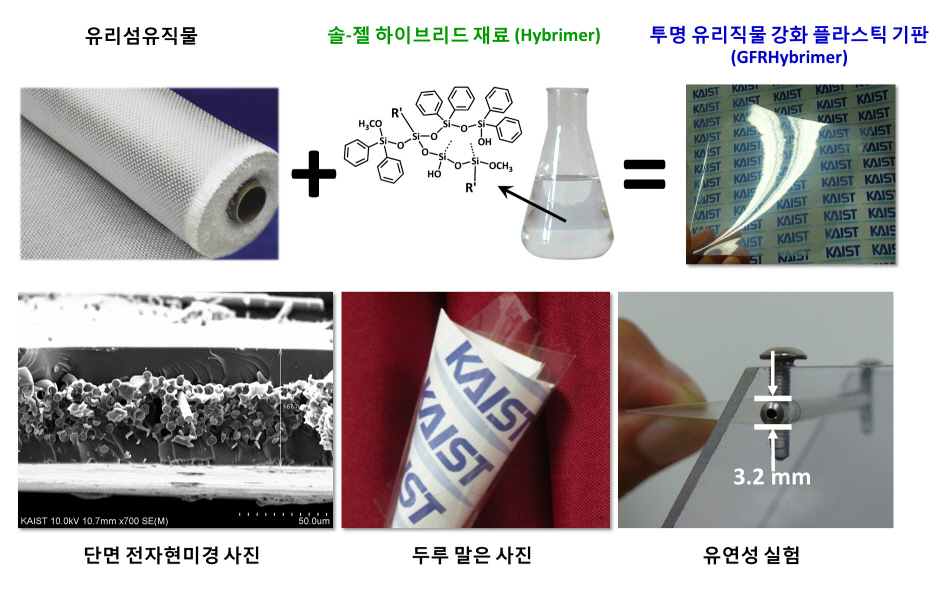 KAIST developed a plastic film board less sensitive to heat.
The research result was made the cover of magazine, Advanced Materials and is accredited to paving the way to commercialize flexible display screens and solar power cells.
Transparent plastic and glass cloths, which have a limited thermal expansion needed for the production of flexible display screens and solar power cells, were developed by Korean researchers.
The research, led by KAIST’s Professor Byoung-Soo Bae, was funded by the Engineering Research Center under the initiative of the Ministry of Education, Science and Technology and the National Research Foundation. The research result was printed as the cover paper of ‘Advanced Materials’ which is the leading magazine in the field of materials science.
Professor Bae’s team developed a hybrid material with the same properties as fiber glass. With the material, they created a transparent, plastic film sheet resistant to heat. Transparent plastic film sheets were used by researchers all over the world to develop devices such as flexible displays or solar power cells that can be fit into various living spaces. However, plastic films are heat sensitive and tend to expand as temperature increases, thereby making it difficult to produce displays or solar power cells.
The new transparent, plastic film screen shows that heat expansion index (13ppm/oC) similar to that of glass fiber (9ppm/oC) due to the presence of glass fibers; its heat resistance allows to be used for displays and solar power cells over 250oC.
Professor Bae’s team succeeded in producing a flexible thin plastic film available for use in LCD or AMOLED screens and thin solar power cells.
Professor Bae commented, “Not only the newly developed plastic film has superior qualities, compared to the old models, but also it is cheap to produce, potentially bringing forward the day when flexible displays and solar panels become commonplace. With the cooperation of various industries, research institutes and universities, we will strive to improve the existing design and develop it further.”
2011.01.05 View 15850
KAIST developed a plastic film board less sensitive to heat.
The research result was made the cover of magazine, Advanced Materials and is accredited to paving the way to commercialize flexible display screens and solar power cells.
Transparent plastic and glass cloths, which have a limited thermal expansion needed for the production of flexible display screens and solar power cells, were developed by Korean researchers.
The research, led by KAIST’s Professor Byoung-Soo Bae, was funded by the Engineering Research Center under the initiative of the Ministry of Education, Science and Technology and the National Research Foundation. The research result was printed as the cover paper of ‘Advanced Materials’ which is the leading magazine in the field of materials science.
Professor Bae’s team developed a hybrid material with the same properties as fiber glass. With the material, they created a transparent, plastic film sheet resistant to heat. Transparent plastic film sheets were used by researchers all over the world to develop devices such as flexible displays or solar power cells that can be fit into various living spaces. However, plastic films are heat sensitive and tend to expand as temperature increases, thereby making it difficult to produce displays or solar power cells.
The new transparent, plastic film screen shows that heat expansion index (13ppm/oC) similar to that of glass fiber (9ppm/oC) due to the presence of glass fibers; its heat resistance allows to be used for displays and solar power cells over 250oC.
Professor Bae’s team succeeded in producing a flexible thin plastic film available for use in LCD or AMOLED screens and thin solar power cells.
Professor Bae commented, “Not only the newly developed plastic film has superior qualities, compared to the old models, but also it is cheap to produce, potentially bringing forward the day when flexible displays and solar panels become commonplace. With the cooperation of various industries, research institutes and universities, we will strive to improve the existing design and develop it further.”
2011.01.05 View 15850 -
 New Year's Message from President Nam-Pyo Suh
President Nam-Pyo Suh delivered a New Year’s message on January 3, 2011. While announcing plans to celebrate the 40th anniversary of KAIST throughout this year including a long-term development strategy for the university, Vision 2025, the president assessed the past accomplishments made in 2010 and laid out future prospects for 2011. The full text of his speech is attached below.
2011.01.05 View 9958
New Year's Message from President Nam-Pyo Suh
President Nam-Pyo Suh delivered a New Year’s message on January 3, 2011. While announcing plans to celebrate the 40th anniversary of KAIST throughout this year including a long-term development strategy for the university, Vision 2025, the president assessed the past accomplishments made in 2010 and laid out future prospects for 2011. The full text of his speech is attached below.
2011.01.05 View 9958 -
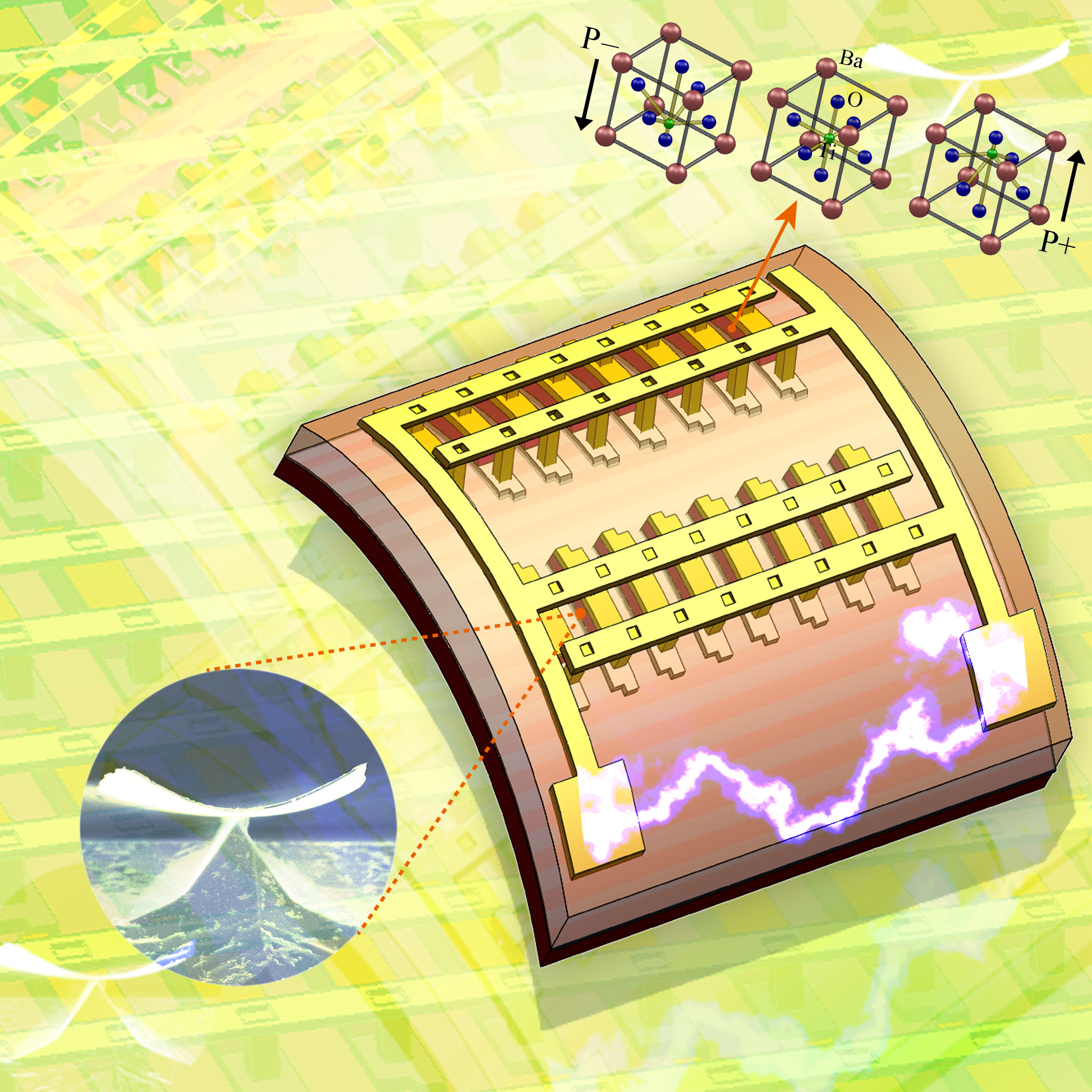 The KAIST & GIT team developed a power generation technology using bendable thin film nano-materials.
Figure description: Flexible thin film nanomaterials produce electricity.
Can a heart implanted micro robot operate permanently?
Can cell phones and tiny robots implanted in the heart operate permanently without having their batteries charged?
It might sound like science fiction, but these things seem to be possible in the near future. The team of Prof. Keon Jae Lee (KAIST, Dept. of Materials Science and Engineering) and Prof. Zhong Lin Wang (Georgia Institute of Technology, Dept. of Materials Science and Engineering) has developed new forms of highly efficient, flexible nanogenerator technology using the freely bendable piezoelectric ceramic thin film nano-materials that can convert tiny movements of the human body (such as heart beats and blood flow) into electrical energy.
The piezoelectric effect refers to voltage generation when pressure or bending strength is applied to piezoelectric materials. The ceramics, containing a perovskite structure, have a high piezoelectric efficiency. Until now, it has been very difficult to use these ceramic materials to fabricate flexible electronic systems due to their brittle property.
The research team, however, has succeeded in developing a bio-eco-friendly ceramic thin film nanogenerator that is freely bendable without breakdown.
Nanogenerator technology, a power generating system without wires or batteries, combines nanotechnology with piezoelectrics that can be used not only in personal mobile electronics but also in bio-implantable sensors or as an energy source for micro robots. Energy sources in nature (wind, vibration, and sound) and biomechanical forces produced by the human body (heart beats, blood flow, and muscle contraction/relaxation) can infinitely produce nonpolluting energy. (Nanogenerator produces electricity by external forces: http://www.youtube.com/watch?v=tvj0SsBqpBw)
Prof. Keon Jae Lee (KAIST) was involved in the first co-invention of “High Performance Flexible Single Crystal Electronics” during his PhD course at the University of Illinois at Urbana-Champaign. This nanogenerator technology, based on the previous invention, utilized the similar protocol of transferring ceramic thin film nano-materials on flexible substrates and produced voltage generation between electrodes.
Prof. Zhong Lin Wang (Georgia Tech, inventor of the nanogenerator) said, “This technology can be used to turn on an LED by slightly modifying circuits and operate touchable flexible displays. In addition, thin film nano-materials (‘barium titanate’) of this research have the property of both high efficiency and lead-free bio compatibility, which can be used in future medical applications.” This result is published in November online issue of ‘Nano Letters’ ACS journal.
<Video>
Youtube link: http://www.youtube.com/watch?v=tvj0SsBqpBw
Thin Film Nanogenerator produces electricity by external forces.
2010.11.23 View 16424
The KAIST & GIT team developed a power generation technology using bendable thin film nano-materials.
Figure description: Flexible thin film nanomaterials produce electricity.
Can a heart implanted micro robot operate permanently?
Can cell phones and tiny robots implanted in the heart operate permanently without having their batteries charged?
It might sound like science fiction, but these things seem to be possible in the near future. The team of Prof. Keon Jae Lee (KAIST, Dept. of Materials Science and Engineering) and Prof. Zhong Lin Wang (Georgia Institute of Technology, Dept. of Materials Science and Engineering) has developed new forms of highly efficient, flexible nanogenerator technology using the freely bendable piezoelectric ceramic thin film nano-materials that can convert tiny movements of the human body (such as heart beats and blood flow) into electrical energy.
The piezoelectric effect refers to voltage generation when pressure or bending strength is applied to piezoelectric materials. The ceramics, containing a perovskite structure, have a high piezoelectric efficiency. Until now, it has been very difficult to use these ceramic materials to fabricate flexible electronic systems due to their brittle property.
The research team, however, has succeeded in developing a bio-eco-friendly ceramic thin film nanogenerator that is freely bendable without breakdown.
Nanogenerator technology, a power generating system without wires or batteries, combines nanotechnology with piezoelectrics that can be used not only in personal mobile electronics but also in bio-implantable sensors or as an energy source for micro robots. Energy sources in nature (wind, vibration, and sound) and biomechanical forces produced by the human body (heart beats, blood flow, and muscle contraction/relaxation) can infinitely produce nonpolluting energy. (Nanogenerator produces electricity by external forces: http://www.youtube.com/watch?v=tvj0SsBqpBw)
Prof. Keon Jae Lee (KAIST) was involved in the first co-invention of “High Performance Flexible Single Crystal Electronics” during his PhD course at the University of Illinois at Urbana-Champaign. This nanogenerator technology, based on the previous invention, utilized the similar protocol of transferring ceramic thin film nano-materials on flexible substrates and produced voltage generation between electrodes.
Prof. Zhong Lin Wang (Georgia Tech, inventor of the nanogenerator) said, “This technology can be used to turn on an LED by slightly modifying circuits and operate touchable flexible displays. In addition, thin film nano-materials (‘barium titanate’) of this research have the property of both high efficiency and lead-free bio compatibility, which can be used in future medical applications.” This result is published in November online issue of ‘Nano Letters’ ACS journal.
<Video>
Youtube link: http://www.youtube.com/watch?v=tvj0SsBqpBw
Thin Film Nanogenerator produces electricity by external forces.
2010.11.23 View 16424 -
 Time: 50 Best Inventions of 2010--KAIST Online Electric Vehicle
Time, a magazine issued on November 22, 2010, has released a list of “50 Best Inventions of 2010” in its special article. KAIST’s Online Electric Vehicle (OLEV) was selected as one of the year’s biggest and coolest breakthroughs in science and technology.
For the article, please click the link: http://www.time.com/time/specials/packages/article/0,28804,2029497_2030622_2029703,00.html
2010.11.12 View 10003
Time: 50 Best Inventions of 2010--KAIST Online Electric Vehicle
Time, a magazine issued on November 22, 2010, has released a list of “50 Best Inventions of 2010” in its special article. KAIST’s Online Electric Vehicle (OLEV) was selected as one of the year’s biggest and coolest breakthroughs in science and technology.
For the article, please click the link: http://www.time.com/time/specials/packages/article/0,28804,2029497_2030622_2029703,00.html
2010.11.12 View 10003 -
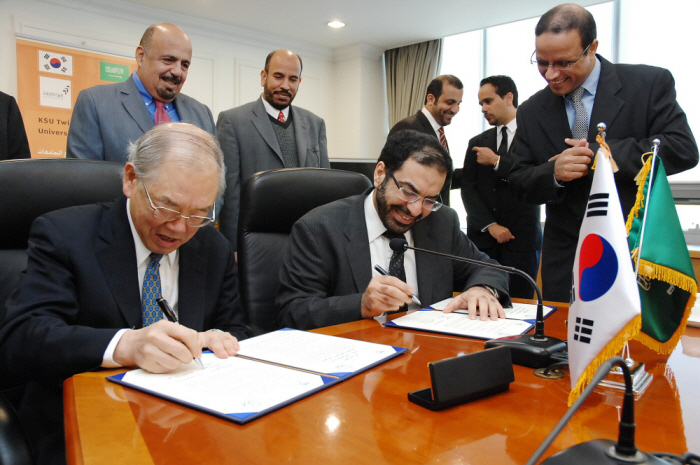 Minister of Higher Education of Saudi Arabia Visited KAIST to Sign Agreement on Joint Research Projects
Khaled bin Mohammad Al-Anqari, the Minister of Higher Education of Saudi Arabia, visited KAIST on October 26th to conclude a joint agreement with KAIST.
The group of Saudi Arabian visitors included Abdullah bin Abdularhman Al-Othman, President of the King Saud University, Osama bin Sadiq Tayeb, President of King Abdulaziz University, and Khalid bin Salih Al-Sultan, President of the best Saudi Arabian technological university, King Fahad University of Petroleum and Minerals.
Through research agreement between KAIST and the King Saud University and King Fahad University of Petroleum and Minerals, joint research projects, mutual visitations of research professors, interchange of academic programs, joint seminars and scientific societies will be held to promote the lively interchange between higher education institutions of Korea and Saudi Arabia.
In particular, King Saud University and KAIST has signed an agreement on joint research projects in the fields of “Solar-Ocean Thermal Exchange Desalination,” “Develop New Energy Management Service for Residential and Commercial Customers Using Smart Metering and Sensor Network Information” and “Superior Production of Lactic Acid from Saudi Dates Using Bioprocess Technology.”
The projects will be funded by the Saudi Arabian government, and their scope will be determined in the future
“Compared to the robust industrial economic interactions between the Middle East and Korea, the interchange of the two countries’ higher education institutions has been poor,” said Jong Hyun Kim, Visiting Professor of Nuclear & Quantum Engineering Department of KAIST who will be conducting one of the joint programs with the Electrical Engineering Department of the King Saud University. “Like this joint research, I hope KAIST will, in many different ways, lead the way in cooperating and interacting with higher education institutions of the Middle EAST.”
Al-Anquari, Minister of Higher Education of Saudi Arabia, who showed great interest in KAIST’s innovative research and high technology development, expressed his will to put more effort into extending the interchange between universities of Saudi Arabia and of Korea, including KAIST.
2010.11.03 View 17003
Minister of Higher Education of Saudi Arabia Visited KAIST to Sign Agreement on Joint Research Projects
Khaled bin Mohammad Al-Anqari, the Minister of Higher Education of Saudi Arabia, visited KAIST on October 26th to conclude a joint agreement with KAIST.
The group of Saudi Arabian visitors included Abdullah bin Abdularhman Al-Othman, President of the King Saud University, Osama bin Sadiq Tayeb, President of King Abdulaziz University, and Khalid bin Salih Al-Sultan, President of the best Saudi Arabian technological university, King Fahad University of Petroleum and Minerals.
Through research agreement between KAIST and the King Saud University and King Fahad University of Petroleum and Minerals, joint research projects, mutual visitations of research professors, interchange of academic programs, joint seminars and scientific societies will be held to promote the lively interchange between higher education institutions of Korea and Saudi Arabia.
In particular, King Saud University and KAIST has signed an agreement on joint research projects in the fields of “Solar-Ocean Thermal Exchange Desalination,” “Develop New Energy Management Service for Residential and Commercial Customers Using Smart Metering and Sensor Network Information” and “Superior Production of Lactic Acid from Saudi Dates Using Bioprocess Technology.”
The projects will be funded by the Saudi Arabian government, and their scope will be determined in the future
“Compared to the robust industrial economic interactions between the Middle East and Korea, the interchange of the two countries’ higher education institutions has been poor,” said Jong Hyun Kim, Visiting Professor of Nuclear & Quantum Engineering Department of KAIST who will be conducting one of the joint programs with the Electrical Engineering Department of the King Saud University. “Like this joint research, I hope KAIST will, in many different ways, lead the way in cooperating and interacting with higher education institutions of the Middle EAST.”
Al-Anquari, Minister of Higher Education of Saudi Arabia, who showed great interest in KAIST’s innovative research and high technology development, expressed his will to put more effort into extending the interchange between universities of Saudi Arabia and of Korea, including KAIST.
2010.11.03 View 17003 -
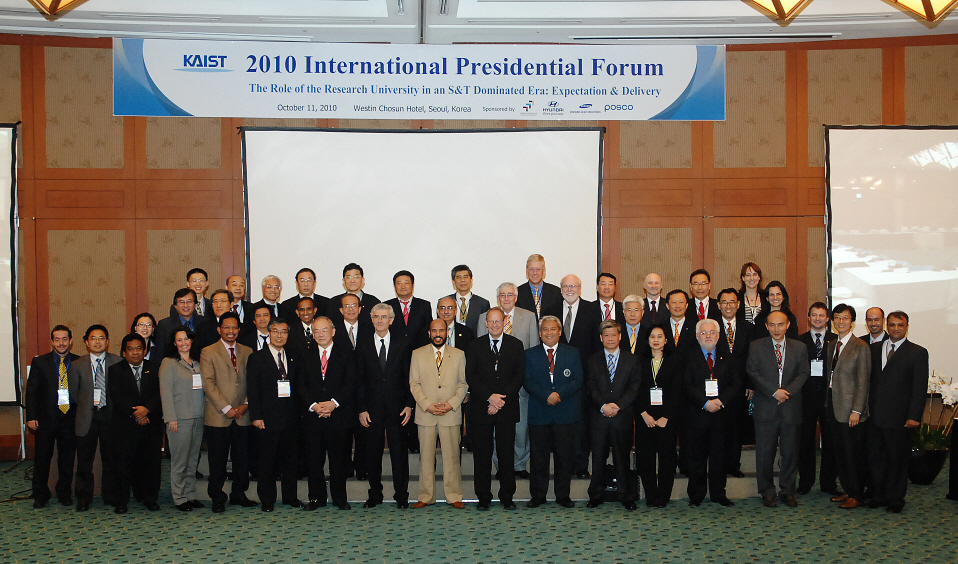 2010 International Presidential Forum was held successfully.
On October 11th, the 2010 International Presidential Forum on “The Role of the Research University in an S&T Dominated Era: Expectation & Delivery” was held successfully at the Westin Chosun Hotel in Seoul. The third International Presidential Forum to be held, participants of the 2010 Presidential Forum engaged in an in-depth discussion about the direction that research universities should take in the 21st Century.
On its opening, President Nam Pyo Suh delivered a congratulatory message saying, “This forum is a meaningful gathering where research universities will suggest role models and find ways research universities can contribute to the progress of mankind in this century.”
Following, Lee Ki Jun, CEO of the Korean Federation of Science and Technology Societies said, “The common goal of the world’s research universities is to solve the problems mankind is facing together. I believe that the discussion we will hold today at the forum will point to the future direction of research universities.”
“To produce next generation engineers meeting global standards, exchange and dual degree programs between universities must be strengthened,” said Lars Pallesen, President of the Technical University of Denmark. “Research universities must support the exchange between students beyond cultural and national borders to adapt to the global market.”
Ichiro Okura, Vice President of Tokyo Institute of Technology, presented on the “Asian Science and Technology Pioneering Institutes of Research and Education, ASPIRE.” ASPIRE is a community created by the coalition between science and technology universities in the Far East. Its purpose is to contribute to sustainable global growth by educating high-quality human resources and lead Asia’s technology innovation based on science and technology development.
“For research universities to solve today’s global issues, universities must create new ideas by performing fundamental studies and developing innovative technology. The financial resources of universities must be focused with choices based on results,” remarked President Suh.
Zaini Ujang, Vice-President of the Universiti Teknologi Malaysia stated that “the Malaysian government is planning on converting from a ‘labor-intensive economy’ to an ‘innovative leading economy’ with the goal of joining the advanced countries by 2020. In today’s science and technology era where innovative technology is necessary, research universities have an important role of developing the knowledge environmental system to lead the world economy.” Vice-President Ujang then explained what strategies Malaysian research universities devised in the innovative leading economy era to create research universities that bring creativity and innovation.
Tod A. Laursen, President of KUSTAR, said that “KUSTAR has a leading role in bringing science and technology and manpower necessary in converting the oil-centered economy of UAE to a knowledge-based economy. KUSTAR will continuously strengthen international cooperation to become not only the best engineering university in the Arab region but in the world.”
At this year’s forum, thirty international presidents and vice presidents from 24 universities in 15 countries including Georgia Tech, Technical University of Denmark, Technion-Israel Institute of Technology, University of Queensland, Tokyo University, Nanyang Technological University, University Teknologi Malaysia and Hong Kong Institute of Science and Technology along with forty national figures such as the presidents of Hanyang University and Handong Global University, governmental bureaucrats and representatives from national business and institutions participated.
2010.10.20 View 17661
2010 International Presidential Forum was held successfully.
On October 11th, the 2010 International Presidential Forum on “The Role of the Research University in an S&T Dominated Era: Expectation & Delivery” was held successfully at the Westin Chosun Hotel in Seoul. The third International Presidential Forum to be held, participants of the 2010 Presidential Forum engaged in an in-depth discussion about the direction that research universities should take in the 21st Century.
On its opening, President Nam Pyo Suh delivered a congratulatory message saying, “This forum is a meaningful gathering where research universities will suggest role models and find ways research universities can contribute to the progress of mankind in this century.”
Following, Lee Ki Jun, CEO of the Korean Federation of Science and Technology Societies said, “The common goal of the world’s research universities is to solve the problems mankind is facing together. I believe that the discussion we will hold today at the forum will point to the future direction of research universities.”
“To produce next generation engineers meeting global standards, exchange and dual degree programs between universities must be strengthened,” said Lars Pallesen, President of the Technical University of Denmark. “Research universities must support the exchange between students beyond cultural and national borders to adapt to the global market.”
Ichiro Okura, Vice President of Tokyo Institute of Technology, presented on the “Asian Science and Technology Pioneering Institutes of Research and Education, ASPIRE.” ASPIRE is a community created by the coalition between science and technology universities in the Far East. Its purpose is to contribute to sustainable global growth by educating high-quality human resources and lead Asia’s technology innovation based on science and technology development.
“For research universities to solve today’s global issues, universities must create new ideas by performing fundamental studies and developing innovative technology. The financial resources of universities must be focused with choices based on results,” remarked President Suh.
Zaini Ujang, Vice-President of the Universiti Teknologi Malaysia stated that “the Malaysian government is planning on converting from a ‘labor-intensive economy’ to an ‘innovative leading economy’ with the goal of joining the advanced countries by 2020. In today’s science and technology era where innovative technology is necessary, research universities have an important role of developing the knowledge environmental system to lead the world economy.” Vice-President Ujang then explained what strategies Malaysian research universities devised in the innovative leading economy era to create research universities that bring creativity and innovation.
Tod A. Laursen, President of KUSTAR, said that “KUSTAR has a leading role in bringing science and technology and manpower necessary in converting the oil-centered economy of UAE to a knowledge-based economy. KUSTAR will continuously strengthen international cooperation to become not only the best engineering university in the Arab region but in the world.”
At this year’s forum, thirty international presidents and vice presidents from 24 universities in 15 countries including Georgia Tech, Technical University of Denmark, Technion-Israel Institute of Technology, University of Queensland, Tokyo University, Nanyang Technological University, University Teknologi Malaysia and Hong Kong Institute of Science and Technology along with forty national figures such as the presidents of Hanyang University and Handong Global University, governmental bureaucrats and representatives from national business and institutions participated.
2010.10.20 View 17661 -
 International Workshop on EEWS 2010 was held.
On October 7 and 8th at Fusion Hall of KI Building, KAIST, the 2010 International Workshop on EEWS (Energy, Environment, Water, and Sustainability) was held.
The third to be held, forty national and international academic professionals including Mark Shannon, professor at University of Illinois at Urbana-Champaign, Domen Kazunari, Tokyo University professor, Dong Sub Kim, CTO of SK Energy and Doyoung Seung, Senior Vice President of GS Caltex, participated at this year’s workshop.
In twelve sessions, themes including Artificial Photosynthesis, Wireless Power Transfer, Green Aviation, Safe Nuclear Fuel Reuse, Fuel Cells in Action, LED 2.0, Foundation of Energy-Water Nexus, and Flexible Battery & Solar Cell were presented and discussed.
“Through this workshop, current EEWS policy and research progress from different countries and the future of related technologies will be foreseen,” said Jae Kyu Lee, Dean of KAIST EEWS Initiative. “I hope it became an opportunity to create cooperative relationships with leading researchers.”
EEWS is a research project conducted by KAIST to solve global issues that mankind faces today such as depletion of energy, environmental pollution, water shortage, and sustainability.
2010.10.15 View 17996
International Workshop on EEWS 2010 was held.
On October 7 and 8th at Fusion Hall of KI Building, KAIST, the 2010 International Workshop on EEWS (Energy, Environment, Water, and Sustainability) was held.
The third to be held, forty national and international academic professionals including Mark Shannon, professor at University of Illinois at Urbana-Champaign, Domen Kazunari, Tokyo University professor, Dong Sub Kim, CTO of SK Energy and Doyoung Seung, Senior Vice President of GS Caltex, participated at this year’s workshop.
In twelve sessions, themes including Artificial Photosynthesis, Wireless Power Transfer, Green Aviation, Safe Nuclear Fuel Reuse, Fuel Cells in Action, LED 2.0, Foundation of Energy-Water Nexus, and Flexible Battery & Solar Cell were presented and discussed.
“Through this workshop, current EEWS policy and research progress from different countries and the future of related technologies will be foreseen,” said Jae Kyu Lee, Dean of KAIST EEWS Initiative. “I hope it became an opportunity to create cooperative relationships with leading researchers.”
EEWS is a research project conducted by KAIST to solve global issues that mankind faces today such as depletion of energy, environmental pollution, water shortage, and sustainability.
2010.10.15 View 17996 -
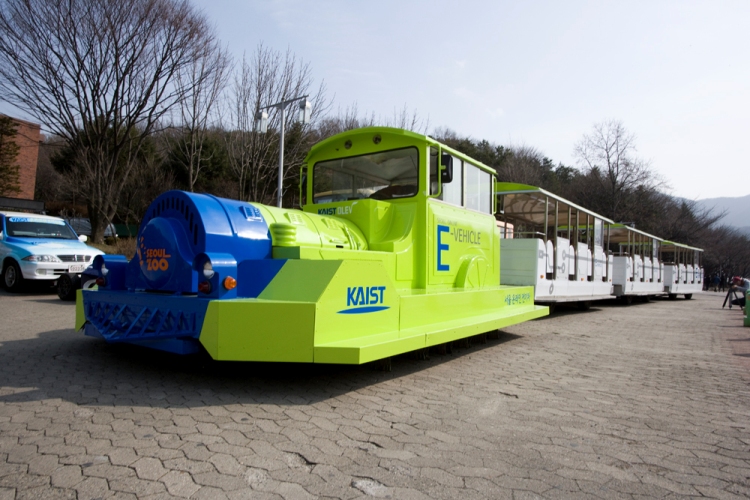 OLEV Safety Confirmed by International Standards
On September 19, KAIST announced that the electromagnetic (EM) field levels of its online electric vehicle (OLEV) measured in June and September of this year demonstrated verification of its safety.
Last June, the EM field level of OLEV installed at the Seoul Grand Park was measured by the Korea Research Institute of Standards and Science (KRISS) to test its harmfulness to human. The results were 0.5 ~ 61mG which is within the national and international standards of 62.5mG.
KRISS measured EM field levels on 22 spots on the side of and at the center of OLEV at a fixed distance (30cm) but variable heights (5cm~150cm) according to the national standard of measurement methods for electromagnetic fields of household appliances and similar apparatuses with regard to human exposure (IEC 62233).
In addition, another testing took place on September 13 following a request by National Assemblywoman Young-Ah Park, a member of the National Assembly’s Education, Science and Technology Committee, who has raised an issue on the safety of OLEV. This testing session was held by EMF Safety, Inc., an institution designated by Park, and it tested the EM field level of the same OLEV train that was tested in June.
As a result, the September measurements were well within the national and international standards with 0~24.1mG. The test was conducted under the presence of third party to produce a fair and objective result.
As reference, the EM field level results are well within the American IEEE electromagnetic field standards of 1,100 mG.
The September measurements were produced by Park’s recommendation of following the criteria specified in the measurement procedures of IEC 62110, “Electric and magnetic field levels generated by AC power systems to public exposure,” which were 15 measurements at a fixed 20cm distance at the side of and from the center of OLEV with variable heights of 50cm~150cm.
2010.09.27 View 13644
OLEV Safety Confirmed by International Standards
On September 19, KAIST announced that the electromagnetic (EM) field levels of its online electric vehicle (OLEV) measured in June and September of this year demonstrated verification of its safety.
Last June, the EM field level of OLEV installed at the Seoul Grand Park was measured by the Korea Research Institute of Standards and Science (KRISS) to test its harmfulness to human. The results were 0.5 ~ 61mG which is within the national and international standards of 62.5mG.
KRISS measured EM field levels on 22 spots on the side of and at the center of OLEV at a fixed distance (30cm) but variable heights (5cm~150cm) according to the national standard of measurement methods for electromagnetic fields of household appliances and similar apparatuses with regard to human exposure (IEC 62233).
In addition, another testing took place on September 13 following a request by National Assemblywoman Young-Ah Park, a member of the National Assembly’s Education, Science and Technology Committee, who has raised an issue on the safety of OLEV. This testing session was held by EMF Safety, Inc., an institution designated by Park, and it tested the EM field level of the same OLEV train that was tested in June.
As a result, the September measurements were well within the national and international standards with 0~24.1mG. The test was conducted under the presence of third party to produce a fair and objective result.
As reference, the EM field level results are well within the American IEEE electromagnetic field standards of 1,100 mG.
The September measurements were produced by Park’s recommendation of following the criteria specified in the measurement procedures of IEC 62110, “Electric and magnetic field levels generated by AC power systems to public exposure,” which were 15 measurements at a fixed 20cm distance at the side of and from the center of OLEV with variable heights of 50cm~150cm.
2010.09.27 View 13644